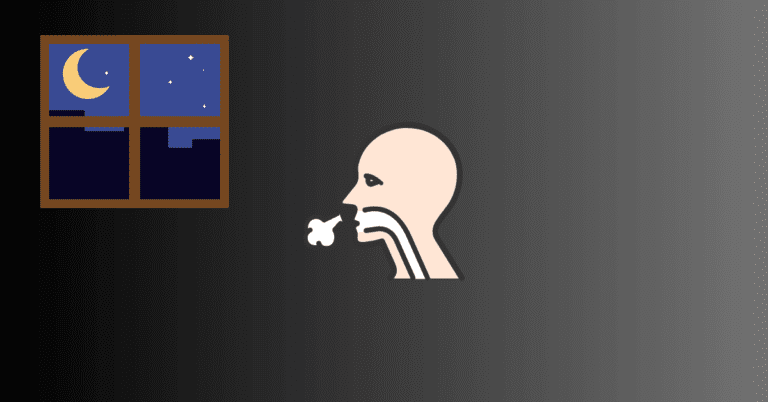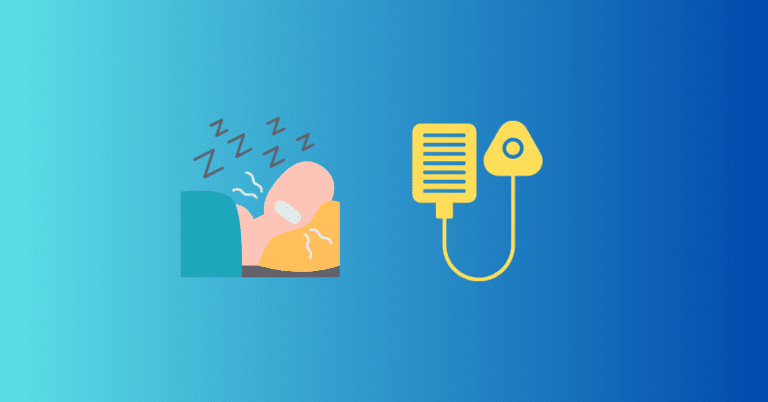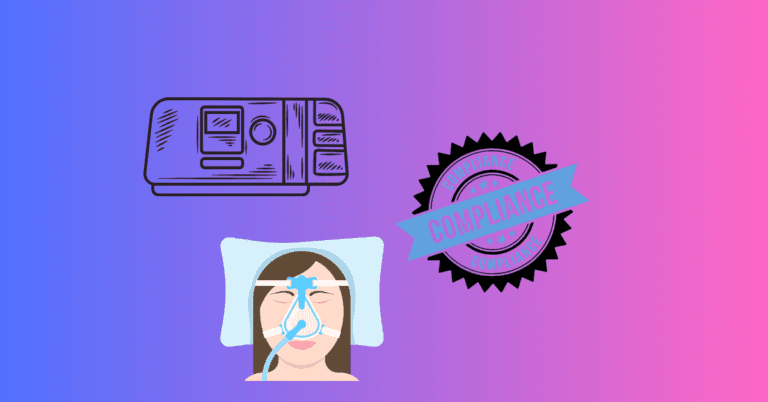Understanding Hypopnea – Partial Breathing Obstructions
Jeremy Smith is a long-term CPAP user and sleep apnea advocate. After being diagnosed with severe obstructive sleep apnea, he created ByJeremySmith.com to help others navigate CPAP therapy through personal stories, gear reviews, and practical advice.
Living with sleep apnea can be exhausting and life-altering.
For those of us who have faced this condition firsthand, the constant battle to get a restful night’s sleep can feel never-ending.
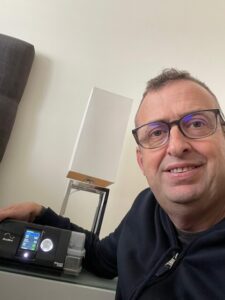
If the night is a problem, then the days can be worse. I had low energy most of the day and even suffered regular migraines. It wasn’t till a routine trip to the doctor that it was revealed I had high blood pressure.
I was shocked; no one else in my family had high blood pressure (hypertension).
It wasn’t long after that that I received a diagnosis of severe obstructive sleep apnea, and everything started to make sense.
I wanted to learn more about this sleeping condition, so I did extensive research, which ultimately led me to create this blog to help other people.
In this article, we’ll explore what hypopnea is, how it’s diagnosed, and its impact on your health—while weaving in my own experience of managing severe obstructive sleep apnea.
What Is Hypopnea?
Hypopnea is a partial reduction in airflow during sleep that causes shallow breathing. It’s typically defined as a decrease of 30% or more in airflow lasting at least 10 seconds, often accompanied by a drop in blood oxygen levels.
This condition is closely related to obstructive sleep apnea (OSA), which involves airway blockages interrupting normal breathing patterns during sleep.
In simple terms, during hypopnea, the airway becomes partially blocked, reducing the air flowing into the lungs. This makes it harder for the body to maintain healthy oxygen levels, leading to sleep disturbances, fatigue, and a range of other health issues.
When I was first diagnosed with sleep apnea, I thought it was all about full breathing stops (apneas). It wasn’t until my sleep study that I learned about hypopneas—and how frequent partial blockages were also disrupting my sleep.
Like many people with severe sleep apnea, I had both apneas and hypopneas, which contributed to my constant daytime fatigue.
So, let’s examine the statistics in my sleep report to give you an idea of how hypopneas contribute to a diagnosis.
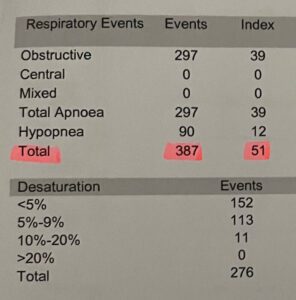
The analysed time was 509 minutes. The sleep doctor added pink highlights (shown above) to give me a score of 387 events over this time.
That’s roughly an event every 1 minute and 20 seconds. This is categorized as very severe obstructive sleep apnea.
The other interesting statistic you will notice is “index.” This is the Apnea-Hypopnea Index (AHI), which I discuss below.
Another thing to observe is that my central and mixed events were both zero. Central sleep apnea is a condition in which the brain doesn’t send the correct signals for you to breathe.
For others, there may be a reading here. If that’s the case, then a bipap machine would probably be the best solution for the treatment of sleep apnea.
Hypopnea vs. Apnea: What’s the Difference?
While both apnea and hypopnea involve interruptions in breathing during sleep, the key difference lies in the severity of the airflow reduction:
- Apnea: A complete cessation of airflow for at least 10 seconds. The airway is fully blocked, and no air gets through.
- Hypopnea: A partial reduction in airflow by 30% or more for at least 10 seconds. Airflow is restricted, but some air still moves through.
Though hypopneas don’t completely stop your breathing, they can still have a significant impact on sleep quality and overall health. In fact, frequent hypopneas can lead to hypoxemia (low oxygen levels in the blood), just like apneas.
Symptoms of Hypopnea
The symptoms of hypopnea are very similar to those of sleep apnea, as both conditions cause sleep disturbances and fragmented sleep. Common symptoms include:
- Daytime fatigue: Waking up feeling unrefreshed and exhausted, even after a full night of sleep.
- Difficulty concentrating: Frequent hypopneas lead to poor sleep quality, making it hard to focus during the day.
- Loud snoring: Snoring is often one of the first signs that someone may be experiencing breathing issues during sleep.
- Gasping or choking during sleep: Hypopnea may cause you to wake up gasping for air as your body tries to restore normal breathing.
- Morning headaches: Low oxygen levels during sleep can lead to headaches upon waking.
For me, the most debilitating symptoms were the constant daytime fatigue and brain fog. Before starting CPAP therapy, I struggled to stay awake and focused during the day, and I didn’t realize that both apnea and hypopnea were causing these disruptions.
Causes and Risk Factors
The causes of hypopnea are often the same as those of obstructive sleep apnea. The airway becomes partially blocked during sleep, usually due to:
- Excess weight: Carrying extra weight, especially around the neck, can put pressure on the airway, making it more likely to collapse.
- Age: As we age, our muscles (including the throat muscles) naturally weaken, increasing the likelihood of hypopneas and apneas.
- Neck circumference: A larger neck circumference can narrow the airway, making it more prone to collapse.
- Smoking: Smoking can irritate and inflame the airway, increasing the risk of partial blockages.
- Alcohol or sedative use: These substances relax the muscles in the throat, making it easier for the airway to become partially blocked during sleep.
In my case, excess weight and a larger neck circumference were factors in developing severe obstructive sleep apnea. After starting CPAP therapy, I began making lifestyle changes to manage these risk factors, which has helped improve my overall sleep quality.
Diagnosing Hypopnea
A sleep study (polysomnography) is usually required to diagnose hypopnea. During the study, sensors are placed on the body to monitor breathing, brain waves, oxygen levels, and heart rate while the patient sleeps.
The Apnea-Hypopnea Index (AHI) is the key metric used to diagnose sleep apnea and hypopnea. It measures the number of apneas and hypopneas per hour of sleep. A higher AHI score indicates more frequent breathing disruptions.
- Normal (AHI < 5): Less than 5 events per hour.
- Mild (AHI 5-15): Between 5 and 15 events per hour.
- Moderate (AHI 15-30): Between 15 and 30 events per hour.
- Severe (AHI > 30): More than 30 events per hour.
My own sleep study showed 51 of both apneas and hypopneas, which contributed to my severe sleep apnea diagnosis. The results were startling but gave me the answers I needed to take action.
Treatment for Hypopnea
The most common treatment for hypopnea is CPAP (Continuous Positive Airway Pressure) therapy. A CPAP machine delivers a constant stream of air through a mask, keeping the airway open and preventing both apnea and hypopnea.
Other treatment options include:
- Lifestyle changes: Losing weight, avoiding alcohol before bed, and sleeping on your side can help reduce the frequency of hypopneas.
- Oral appliances: These devices reposition the jaw and tongue to keep the airway open during sleep.
- Surgery: In some cases, surgery may be recommended to remove excess tissue from the airway or correct structural issues that contribute to hypopneas.
For me, CPAP therapy was a game-changer. While I was hesitant at first, the improvement in my sleep quality was undeniable. I went from feeling constantly fatigued and drained to waking up with more energy and focus. The therapy not only reduced my apneas but also prevented the frequent hypopneas that had been disrupting my sleep.
Long-Term Effects of Untreated Hypopnea
If left untreated, hypopnea can lead to a range of long-term health issues, similar to untreated sleep apnea:
- High blood pressure: Frequent drops in oxygen levels can increase blood pressure, putting extra strain on the heart.
- Heart disease: Over time, the strain caused by hypopneas can contribute to heart problems, including arrhythmias and heart failure.
- Stroke: The risk of stroke is higher in people with untreated hypopnea or sleep apnea.
- Diabetes: Sleep disturbances and low oxygen levels are linked to an increased risk of developing type 2 diabetes.
In my own experience, once I started CPAP therapy, I not only improved my sleep quality but also reduced my risk of these serious health complications. It’s a powerful reminder of how crucial it is to address both apneas and hypopneas.
Conclusion: Hypopnea and the Importance of Early Treatment
While hypopnea may not be as well-known as apnea, it plays a significant role in sleep disorders like obstructive sleep apnea. Left untreated, it can lead to serious health consequences and significantly impact your quality of life.
For those of us who’ve been diagnosed with sleep apnea, understanding hypopnea is useful to getting the full picture of our condition.
CPAP therapy has been life-changing for me, helping to reduce both apnea and hypopnea. If you suspect you may have sleep apnea or hypopnea, I encourage you to see your doctor to get a sleep study and take action—it can truly change your life.
If you have any questions about Hypopnea or Apnea, please comment below.
Disclaimer: The content on this blog is for informational and educational purposes only and is not a substitute for professional medical advice. Always speak with your doctor or sleep specialist before starting, stopping, or changing any treatment or therapy related to sleep apnea or CPAP use.


